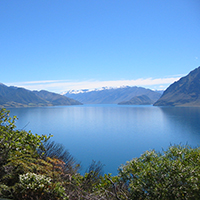The use of the term ‘limnology’ and its scientometrics consequences for limnologists

Submitted: 10 June 2021
Accepted: 27 July 2021
Published: 30 July 2021
Accepted: 27 July 2021
Abstract Views: 1023
PDF: 237
Dataset: 0
Supplementary Table 1: 270
Supplementary Table 2: 85
HTML: 42
Dataset: 0
Supplementary Table 1: 270
Supplementary Table 2: 85
HTML: 42
Publisher's note
All claims expressed in this article are solely those of the authors and do not necessarily represent those of their affiliated organizations, or those of the publisher, the editors and the reviewers. Any product that may be evaluated in this article or claim that may be made by its manufacturer is not guaranteed or endorsed by the publisher.
All claims expressed in this article are solely those of the authors and do not necessarily represent those of their affiliated organizations, or those of the publisher, the editors and the reviewers. Any product that may be evaluated in this article or claim that may be made by its manufacturer is not guaranteed or endorsed by the publisher.
Similar Articles
- Guojia Huang, Qiuhua Li, Xiaoqing Wang, Mengshu Han, Lei Li, Jing Xiao, Yipeng Liu, Responses of phytoplankton functional groups to environmental factors in the Maixi River, southwest China , Journal of Limnology: Vol. 77 No. 1 (2018)
- Oliver Skibbe, Nelida Abarca, Francine Forrest, Petra Werner, Exploring diatom diversity through cultures - a case study from the Bow River, Canada , Journal of Limnology: Vol. 81 (2022)
- Silvia Giuntini, Clara Tattoni, Alessandra Gagliardi, Alessio Martinoli, Nicola Patocchi, Roberto Lardelli, Adriano Martinoli, Damiano G. Preatoni, Dataset: bird traffic rate at Bolle di Magadino Natural Reserve, Lake Maggiore (Switzerland) , Journal of Limnology: Vol. 81 No. s2 (2022): Effects of water level management on lake littorals and downstream river areas
- Alfredo Schiavon, Claudio Comoglio, Alessandro Candiotto, Franz Hölker, Muhammad Usama Ashraf, Daniel Nyqvist, Survival and swimming performance of a small-sized Cypriniformes (Telestes muticellus) tagged with passive integrated transponders , Journal of Limnology: Vol. 82 (2023)
- Mariko Nagano, Hideyuki Doi, Degree of high phenotypic plasticity in wild populations of Daphnia in early spring , Journal of Limnology: Vol. 77 No. 2 (2018)
- Harry A. Meyer, Juliana G. Hinton, Cari A. Samletzka, Water bears in the Anthropocene: a comparison of urban and woodland tardigrade (Phylum Tardigrada) communities in Southwestern Louisiana, USA , Journal of Limnology: Vol. 72 No. s1 (2013): 12th International Symposium on Tardigrada
- Paraskeva Michailova, Julia Ilkova, Ewa Szarek-Gwiazda, Andrzej Kownacki, Dariusz Ciszewski, Genome instability in Chironomus annularius sensu Strenzke (Diptera, Chironomidae): A biomarker for assessment of the heavy metal contaminants in Poland , Journal of Limnology: Vol. 77 No. s1 (2018): Recent advances in the study of Chironomidae: An overview
- Oscar RAVERA, Gian Maria BEONE, Pier Renato TRINCHERINI, Nicoletta RICCARDI, Seasonal variations in metal content of two Unio pictorum mancus (Mollusca, Unionidae) populations from two lakes of different trophic state , Journal of Limnology: Vol. 66 No. 1 (2007)
- Yasuaki AOTA, Michio KUMAGAI, Kanako ISHIKAWA, Over twenty years trend of chloride ion concentration in Lake Biwa , Journal of Limnology: Vol. 62 No. s1 (2003): Residence Time in Lakes: Science, Management, Education
- Fernando G. Spaccesi, Alberto Rodrigues Capitulo, Benthic communities on hard substrates covered by Limnoperna fortunei Dunker (Bivalvia, Mytilidae) at an estuarine beach (Río de la Plata, Argentina) , Journal of Limnology: Vol. 71 No. 1 (2012)
<< < 41 42 43 44 45 46 47 48 49 50 > >>
You may also start an advanced similarity search for this article.

 https://doi.org/10.4081/jlimnol.2021.2042
https://doi.org/10.4081/jlimnol.2021.2042






